Jump To A Branch
Best Jobs In The Air Force
1. Pilot
If you’ve always loved to fly and want to operate some of the most advanced aircraft in the world, chances are you’d be a great Air Force pilot.
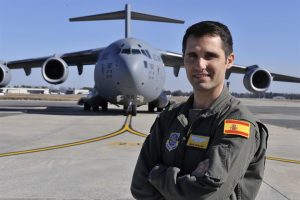
Maybe you grew up watching Top Gun and Iron Eagle and dreamed of flying for the Air Force.
Whatever the reason, becoming a pilot in the Air Force is extremely competitive, especially with individuals vying for specific airframes.
It also happens to be one of the coolest military jobs around.
Related Article – Air Force Jobs List: A List Of All Jobs In The Air Force
If you become an Air Force pilot, you’ll join the ranks of renown legends like Eddie Rickenbacker, Billy Mitchell, known as “The Father of the Air Force,” Henry “Hap” Arnold, and Daniel “Chappie” James.
You’ll also walk away from your service with a highly marketable skill, as pilots are one of the best Air Force jobs for civilian life.
Transitioning to an airline pilot after flying in the Air Force could land you nearly $7 million in overall career earnings.

What Do Pilots Do?
While the most glamorous job in the Air Force might be a combat flyer, Air Force pilots conduct the flight operations of a variety of aircraft ranging from bombers to fighters and tankers to transport planes.
An elite position in the military, Air Force pilots participate in a variety of missions in many countries in the world, including fighting during war, transporting troops, and assisting in humanitarian aid relief.
They may also have other general duties for their squadron, such as scheduling or serving as advisors and trainers.
How Do You Become a Pilot?
In order to qualify as an Air Force pilot, you will need at least a bachelor’s degree, ideally in the sciences.
You will also need to be able start pilot training after the age of 18 before you turn 33, although sometimes age waivers are available up to age 35.
You will be more competitive with a high GPA of 3.4 or higher and a private pilot’s license.
You must be a military officer, which you can accomplish through a ROTC program at a civilian college, attending the Air Force Academy, or by attending Officer Training School.
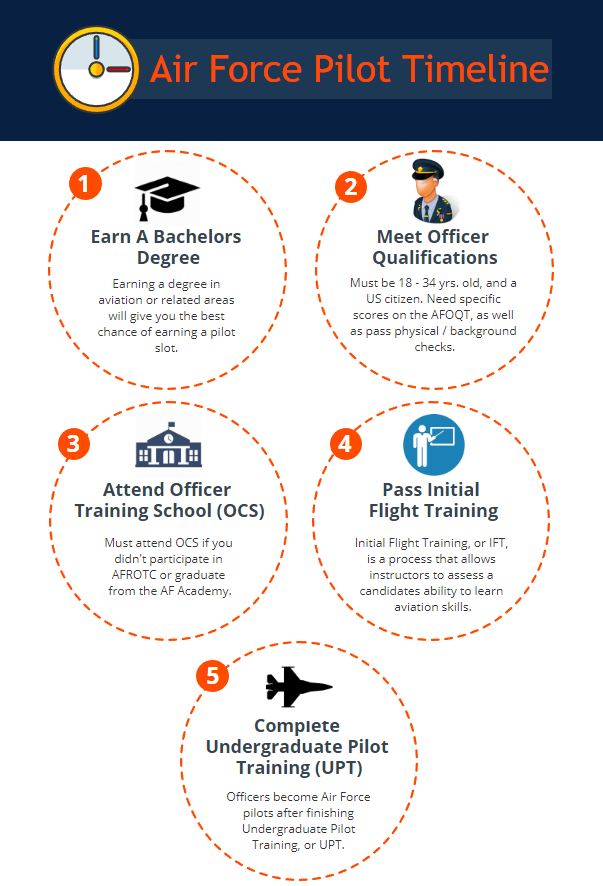
In addition, you’ll need to score at least 25 on the Pilot section, 15 on the Verbal section, and 10 on the Quantitative portion of the Air Force Officer Qualifying Test.
You’ll also need to meet certain physical specifications like a height between 5’4” and 6’5” and be able to pass a First Class Flight Physical. Then you’ll need to attend and succeed at two stages of Flight School.
2. Intelligence Analyst
The Air Force and U.S. military, in general, gather a lot of intelligence, which must be managed, developed, and evaluated in order to utilize the information.
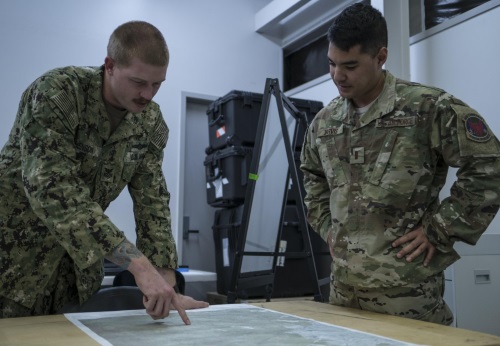
This work falls to Intelligence Analysts in the Air Force and is essential for allowing the Air Force to know not only the strength of its enemies but also its own capabilities and possible vulnerabilities.
Related Article – Air Force Intelligence Officer: Career Details
Although more behind-the-scenes than a cooler job like flying, Intelligence Analysts are crucial to gathering data from the air and capitalizing on it.
What Do Intelligence Analysts Do?
It is the responsibility of Intelligence Analysts to use sophisticated equipment to identify and analyze foreign activity and communication acquired through electromagnetic emissions.
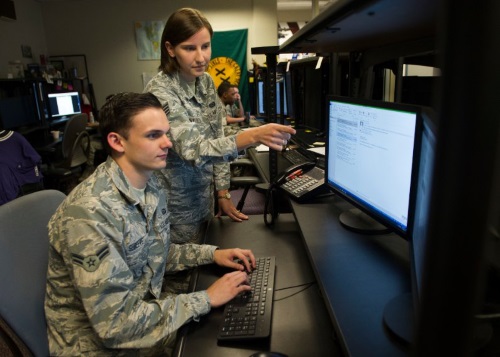
Intelligence Analysts will then interpret this raw data — sometimes in combat situations — to understand its significance, producing combat, strategic, and tactical intelligence reports.
Intelligence Analysts evaluate enemy positions, including any unusual activities or situations that could become critical, and alerts the appropriate officers of their findings, allowing the commanders to respond quickly and powerfully.
How Do You Become an Intelligence Analyst?
You will need a high school diploma or GED and be able to score at least 60 in the Administrative (A) portion of the Armed Service Vocational Aptitude Battery (ASVAB) tests.
In addition, you cannot have a history of temporomandibular joint pain or disorder, a speech impediment, or any other communication deficiency.
You also cannot be colorblind.
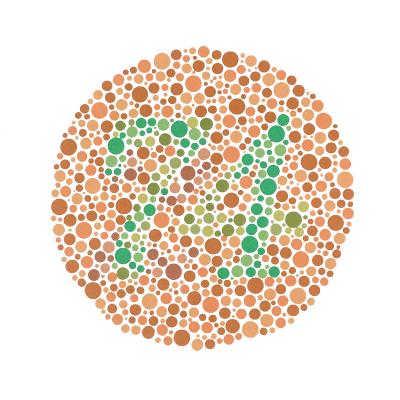
You will have to successfully complete a polygraph, a current Single Scope Background Investigation (SSBI), and the Electronic Signals Intelligence course.
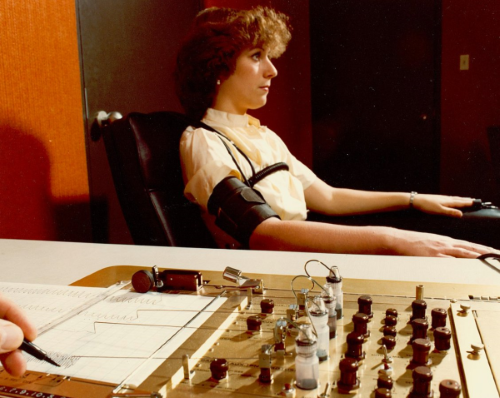
Finally, you must be between the ages of 17 and 39 and complete 7.5 weeks of Basic Military Training in addition to Airmen’s Week.
If you don’t mind sitting at a desk for up to 16 hours a day, then this military job is for you!
3. Aircraft Mechanic
Aircraft Mechanics are essential to the success of the Air Force, as they have the responsibility of taking care of the aircraft when pilots are not out on missions.
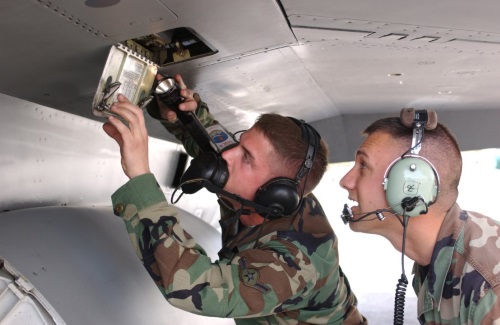
Aircraft Mechanics ensure that the aircraft in their charge are maintained and repaired when needed to be ready at a moment’s notice for a mission.
Aircraft Mechanics and pilots both are crucial to the successful deployment of Air Force aircraft.
What Do Aircraft Mechanics Do?
Aircraft Mechanics ensure that all of the aircraft in the Air Force, including fighters and attack planes, are maintained to the most exacting standards.
They may install a replacement part or even build one from scratch to ensure that the aircraft is safe for pilots, making them able to successfully complete their missions.
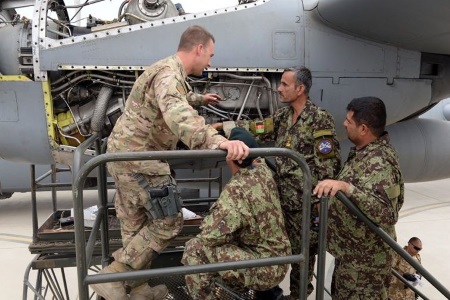
They also review maintenance data to notice any trends, conduct quality assurance tests, and supervise flight and crew chiefs.
And while this doesn’t sound that exciting on paper, in real life, aircraft maintenance crews often get multiple opportunities to deploy with their aircraft to some really exciting locations.
Not to mention the fact that opportunities in civilian life after service are highly lucrative, especially for fighter aircraft mechanics willing to travel and work as private government contractors.
How Do You Become an Aircraft Mechanic?
At the very minimum, you need a high school diploma or GED, and you also will need a basic knowledge of principles that apply to aircraft construction and systems.
Related Article – Air Force Aircraft Loadmaster: Career Details
This includes the application of maintenance directives and an understanding of technical data and reports.
You will need a score of 70 in the mechanical (M) section of the Armed Services Vocational Aptitude Battery (ASVAB) tests as well as being able to qualify for a secret security clearance, which includes a current National Agency Check, Local Agency Checks, and Credit.
Finally, you cannot be colorblind and must be between the ages of 17 and 39.
Best Jobs In The Army
1. Medic
If you’ve watched Hacksaw Ridge or other World War II movies or read a lot of military books, you know how important medics are to the success of a unit.
Many combat medics will risk their lives to save men who are wounded.
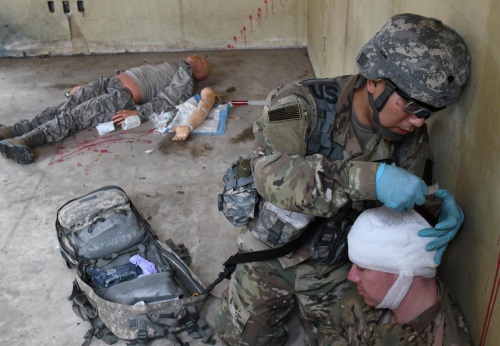
Medics may not be the best shots in a unit and may never even have to fire weapons, but they respond to the frantic cries of “Medic!” from the front lines, often dodging enemy fire to get an injured soldier secure enough to ship back to the field hospital.
Related Article – Army MOS List: A List Of All 159 Army Jobs
Although every job in the military has a military occupational specialty (MOS), combat medics are often identified as their MOS—68W, or “68 Whiskey,” according to the NATO Phonetic Alphabet (or ‘Military Alphabet‘).
What Do Medics Do?
Medics are responsible for providing emergency medical treatment to those wounded on the battlefield.
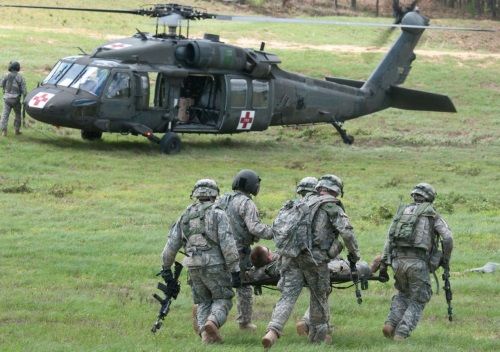
In addition, they provide limited primary care and health protection and evacuation for the wounded.
They are also responsible for instructing soldiers on the Combat Lifesaver/First Responder training course and managing the soldiers’ medical readiness, medical supplies, and equipment.
How Do You Become a Medic?
In addition to a high school diploma or GED, you will need to have a score of at least 101 in the Skilled Technical (ST) section and at least 107 in the General Technical (GT) section of the ASVAB.
Additionally, you will have to complete 10 weeks of Basic Combat Training as well as 16 weeks of Advanced Individual Training, which includes practicing in-patient care.
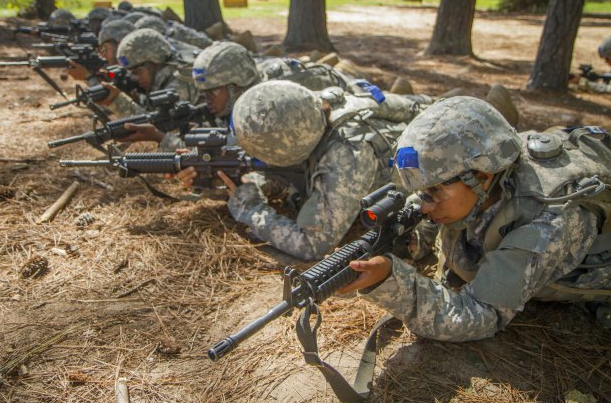
During Advanced Individual Training, you’ll learn skills like emergency medical techniques and plaster-casting techniques.
You also have the option of receiving advanced medical training to specialize in particular areas, ranging from Occupational Therapy (N3) to Special Operations Combat Medic (SOCOM) (W1).
2. Special Forces
We’ve all heard of the Green Berets, the elite military United States Army Special Forces.
Related Article – Green Berets Vs. Army Rangers: 5 Major Differences
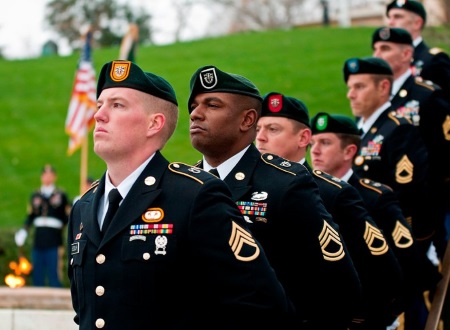
While the public tends to refer to all Special Operations Forces as “Special Forces,” only the U.S. Army Special Forces are the real Special Forces.
Other elite military groups are Special Operations Forces or Special Ops.
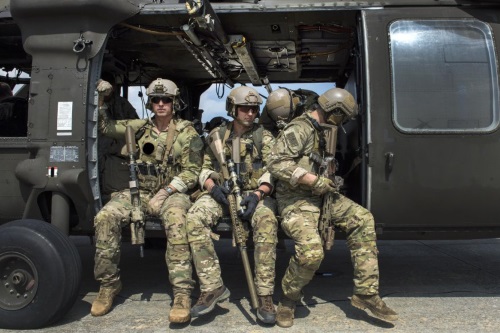
Formed on June 19, 1952, the first Special Special Forces unit in the Army — the 10th Special Forces Group — was activated at Fort Bragg (now Fort Liberty), North Carolina.
Known as the elite of the elite, Army Special Forces soldiers must complete the most extensive mental and physical training in order to join one of the most highly skilled combat forces in the world.
Related Article – Delta Force (SFOD-D): Selection, Training, Motto, and More
What Do Special Forces Soldiers Do?
Army Special Forces soldiers teach military tactics to military members of friendly developing nations and participate in counter-terrorism, direct action, unconventional warfare, and special reconnaissance missions.
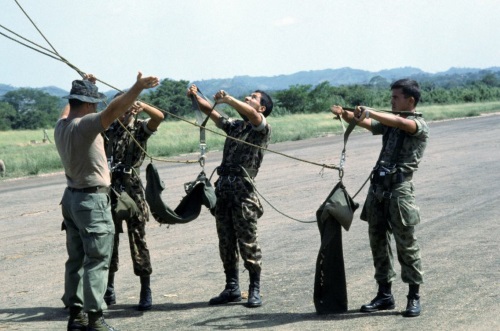
Because all Special Forces soldiers are qualified in a foreign language, they can move in the local population and discover useful information.
Special Forces soldiers can conduct military and paramilitary actions behind enemy lines, including sabotage.
There are 7 enlisted Army MOSs that fall into the Special Forces field, including:
- 18B – Weapons Sergeant
- 18C – Engineer Sergeant
- 18D – Medical Sergeant
- 18E – Communications Sergeant
- 18F – Special Forces Intelligence Sergeant
- 18Z – Special Forces Operations Sergeant
It also includes officer and warrant officer MOSs like Special Forces Officer (18A) and Warrant Officer (180A).
How Do You Become a Special Forces Soldier?
Thanks to recent changes, you can join the ranks of Special Forces either as an applicant, as a current enlisted member, or as an officer.
Under 18X (Special Forces) Enlistment Program, an applicant has the opportunity to try out for Special Forces after completing infantry and parachute training (aka Airborne School).
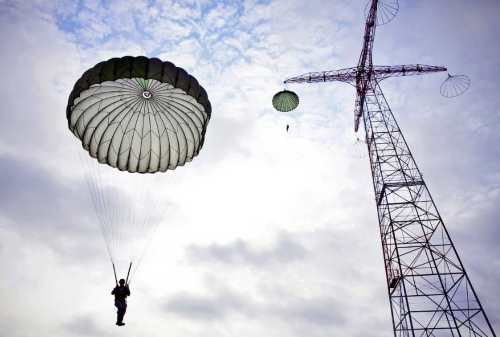
Such individuals have to complete the Special Forces Assessment and Selection (SFAS) program — which very few complete — and then the Special Forces Qualification Course, followed by learning a foreign language at the Defense Language Institute.
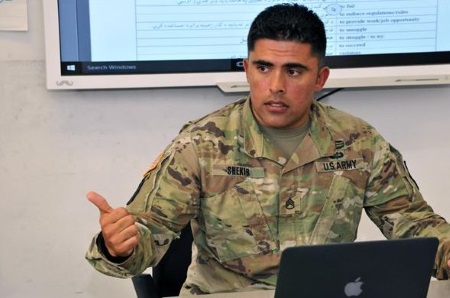
If currently enlisted in the Army, individuals have to be in the rank of E-3 to E-7, with no more than 12-14 years in service, in order to apply and then endure a similar 18-24 month regimen to those just joining the Army in addition to a 19-day Special Forces Prep Course.
Related Article – Army Ranks and Pay
Officers must be First Lieutenants or Captains, have no disciplinary actions on file, be eligible for a Top Secret Clearance, and score at least an 85 on the Defense Language Aptitude Battery, or DLAB.
If you’re looking for a badass job in the army, Special Forces is the way to go!
3. Combat Engineer
Also known as “Sappers,” combat engineers in the Army “clear the way.”
It is their responsibility to build defenses, roads, depots, and airfields for fellow soldiers and clear any enemy obstacles in their way.
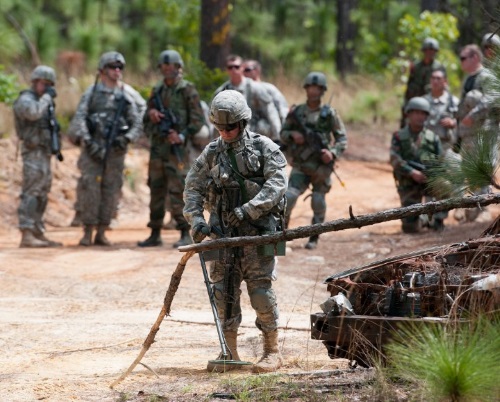
Combat engineers have a supervisory role, requiring them to take charge when encountering difficult terrain on the battlefield.
They are experts in mobility, survival, and general engineering.
What Do Combat Engineers Do?
Combat engineers are responsible for constructing fighting positions and demobilizing enemy obstacles.
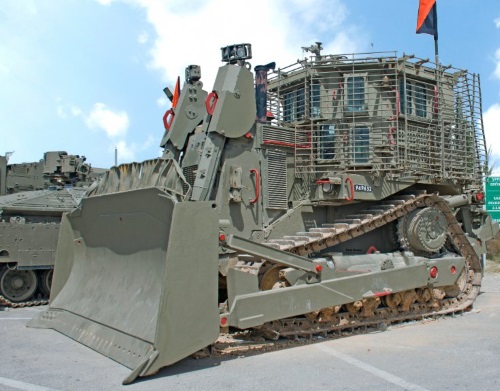
This can include placing and detonating explosives, clearing the route of obstacles or building bridges if a water crossing is needed, installing firing systems for demolition and explosives, laying and clearing minefields, and airfield construction.
In other words, combat engineers ensure that troops can move where they need to without injury to themselves and are protected when they are holding a location.
Related Article – Navy Seabees: Career Details
How Do You Become a Combat Engineer?
You’ll need a score of at least 87 in the combat (CO) section of the ASVAB, possess a physical demands test of “heavy,” and have normal color vision.
You’ll attend 14 weeks of One Station Unit Training, which includes Basic Combat Training and Advanced Individual Training.
You’ll learn skills like:
- Basic demolitions
- Explosive hazards
- Urban operations
- How to construct wire obstacles
- Fix bridge building
- Operate heavy equipment.
Best Jobs In The Navy
1. Hospital Corpsman
Known informally as “Doc,” a hospital corpsman (HM) is the medically trained member of the unit and can assist not only military members in the Navy and the Marine Corps but also the dependents and retirees at Navy Medical Centers.
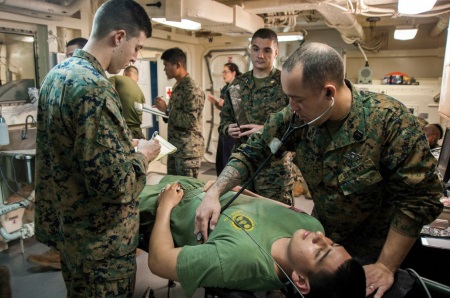
They may be a clinical or specialty technician or a battlefield corpsman with the Marine Corps and Special Operations Units and may even receive an independent duty assignment aboard a ship or submarine or an isolated duty station.
Related Article – Navy Jobs List: A List Of All 89 Ratings In The US Navy For 2023
What Do Hospital Corpsmen Do?
The list of tasks that a hospital corpsman may be required to complete is quite extensive.
In a couple of words, they are responsible for caring for the medical needs of the sick, injured, and even sometimes healthy.
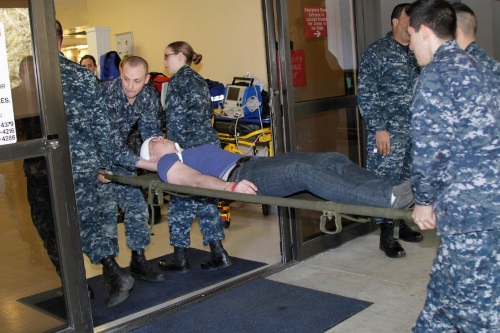
They often maintain treatment records and reports and may supervise preventative medicine programs.
They perform clinical laboratory tests and process X-rays.
They may fill prescriptions and administer immunization programs.
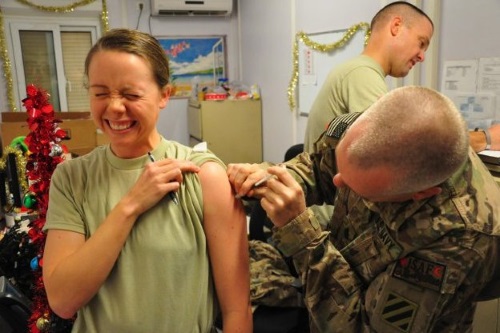
They may conduct preliminary physical examinations and instruct sailors and Marines in first aid, self-aid, and personal hygiene procedures.
Finally, what they may be known best for is transporting the sick and injured on stretchers in combat.
How Do You Become a Hospital Corpsman?
Those interested in becoming a hospital corpsman must adhere to the highest of standards and cannot have a history of drug abuse or offenses involving alcohol, narcotics, or other controlled substances.
Related Article: Can You Join The Military With A DUI?
You’ll have to attend “A” School, a 19-week program at Joint Base San Antonio, TX, that teaches basic principles and techniques of patient care and first aid procedures.
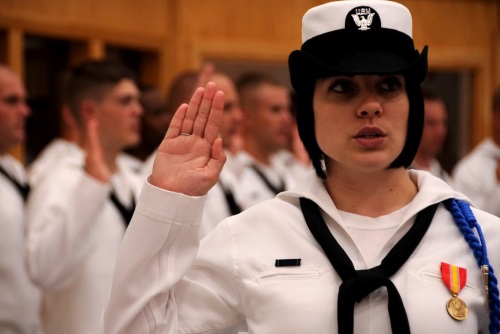
If you volunteer to work with the Seabees or Marine Corps, you’ll attend Field Medical Service School at Camp Lejeune, NC, or Camp Pendleton, CA, after “A” School.
Next, you’ll be assigned to a Navy medical treatment facility, or, in some cases, an operational unit.
Related Article – Navy Hospital Corpsman (HM): Everything You Need To Know
Once assigned to a facility or a unit, a hospital corpsman may request advanced training in a “C” school in order to acquire one of the sub-specialties in the HM field.
2. Navy SEAL
You’ve seen them in the news, in movies, and all over popular culture.
Navy SEALs are trained to operate in the sea, air, and land, and are one of the country’s most elite special operations forces.
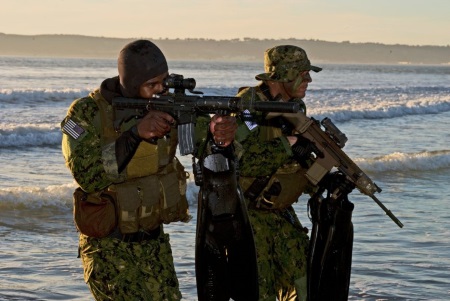
They also happen to be one of the most badass military jobs one can achieve.
Navy SEALs got their start as “Amphibious Scouts and Raiders” in World War 2, and their primary mission then was covert reconnaissance of landing beaches and coastal defenses.
Related Article: 17 Famous Navy SEALs (and 3 Controversial Ones)
They later went on to become formed as Underwater Demolition Teams (UDT), and ultimately the first 2 SEAL teams were formed in January of 1962.
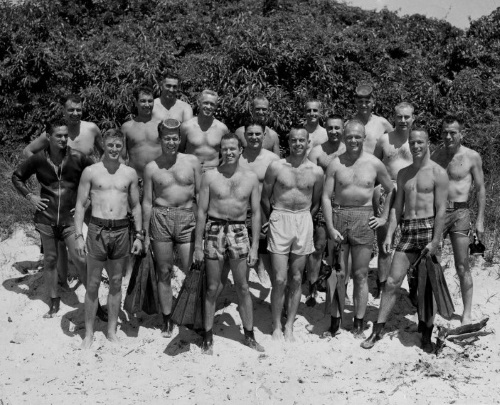
What Do Navy SEALs Do?
SEALs conduct small-unit maritime operations and have been involved in nearly every armed conflict the United States has conducted.
There are currently organized into Groups 1, 2, 3, 4, 10, and 11, and of course, the Navy Special Warfare Development Group, otherwise known as SEAL Team 6.

Their primary missions have ranged from capture / kill missions to training local fighters in guerrilla warfare tactics.
Related Article: DEVGRU: Selection, Squadrons, Gear, Notable Missions, And More
How Do You Become a Navy SEAL?
All Navy SEALs get their start at arguably one of the toughest military training courses in the world: Basic Underwater Demolition / Seal Training, or BUD/S.
In short, it’s not easy.
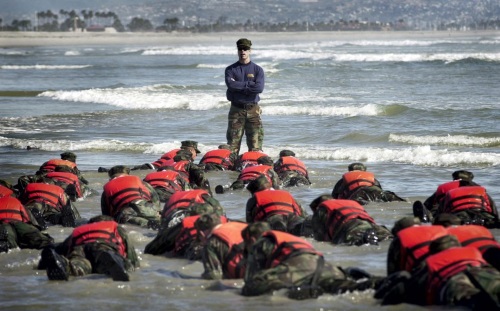
As many as 80% of trainees fail or drop out before ever completing the course.
If you can survive the grueling 6 month Navy SEAL assessment course known as BUD/S, it’s still not over.
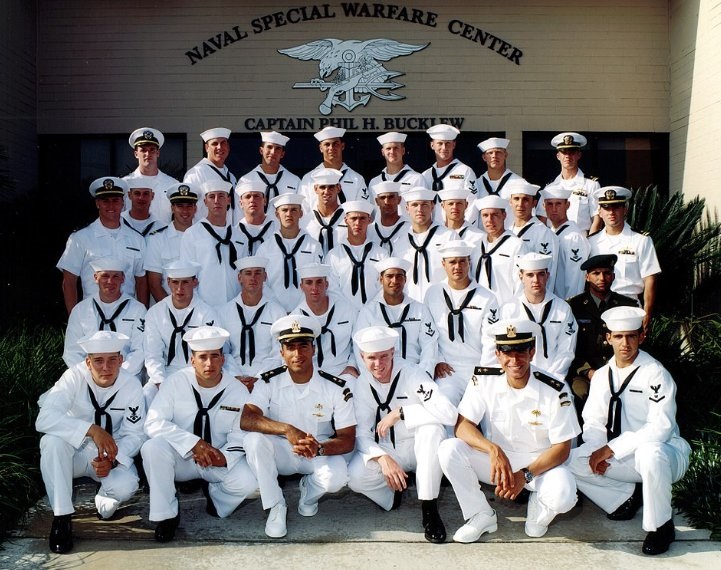
You then have to attend an additional 6 months of Training at SEAL Qualification Training or SQT.
Also, both enlisted and officers have to go through BUD/S, and no one gets special treatment.
Related Article – Navy SEAL Ranks And Pay: How Much Do SEALS Make Anyway?
In fact, it’s said that officers actually have a harder time at BUD/S because they will be potentially leading units into battle.
Upon completion of SQT, a 6 month probationary period, and individual specialized training, the candidate finally earns his right to wear the SEAL Trident.
It also should be noted that the Navy recently opened up the SEAL pipeline to women as well, although none have successfully entered its ranks.
3. Nuclear Engineer
Known as an extremely prestigious, yet incredibly challenging program, the Navy’s Nuclear Field (NF) program provides extensive training to individuals who have a high aptitude for mathematics and science.
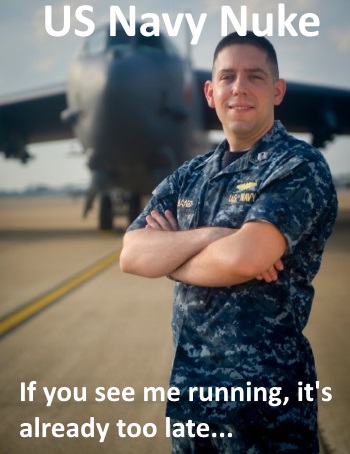
NF is not an actual rating, but instead a specialized enlistment program.
The three ratings within the NF program are Machinist’s Mate (MM), Electrician’s Mate (EM), and Electronics Technician (ET).
What Do Nuclear Engineers Do?
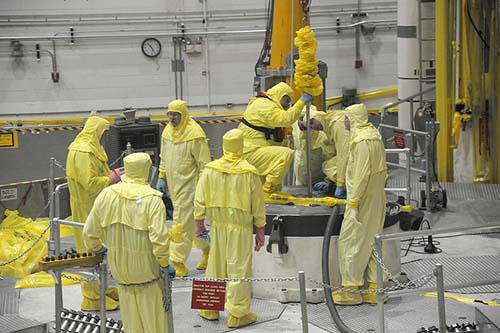
Nuclear-trained MMs, EMs, and ETs work in alongside specialists in the nuclear, technology, and engineering fields.
Nuclear Engineers operate reactor control, propulsion, and power generation systems and may be assigned to modern nuclear-powered aircraft carriers or volunteer for submarine service if they are men.
The extensive nature of the Navy’s nuclear propulsion program is accredited by the American Council on Education (ACE) providing up to 77 semester hours of college credit.
How Do You Become a Nuclear Engineer?
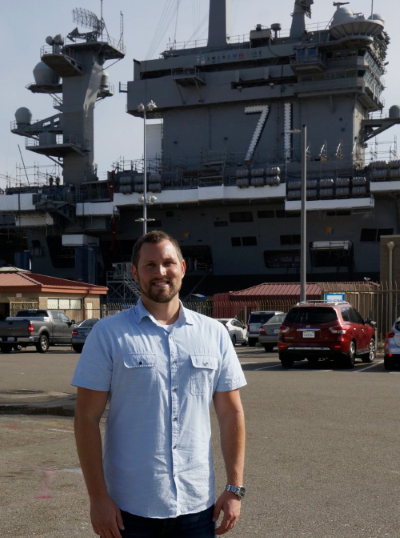
Individuals interested in the Navy’s NF program will have to receive high scores on the ASVAB, they must be at least 17 years old and no older than 25 by their active duty date (although waivers are sometimes given), and they must have completed a full year of algebra in high school or college.
They must also be willing to serve six years due to the length of training and must be able to acquire a Secret clearance.
After recruit training, candidates for the NF program will report to the NF “A” School in Charleston, South Carolina to receive technical training for whichever of the three ratings they received.
Related Article – List Of Navy Bases In The US
Individuals selected for nuclear training enter the Navy at the pay grade of E-3 and may advance to the E-4 pay grade after completing “A” school and maintaining eligibility in the NF program.
After technical training, they attend Nuclear Power School in Charleston, South Carolina, followed by prototype training in their rating specialty at one of two Nuclear Power Training Units (NPTUs), either in Charleston or Ballston Spa, NY.
Finally, after nuclear power training, NF Sailors receive the designation of nuclear propulsion plant operators.
I wouldn’t call it the most fun job in the military, but it certainly pays well after your time is up!
Best Jobs In The Marines
1. Marine Intelligence Officer
Although when you think of a Marine, you probably don’t think of a Marine Intelligence Officer, it is obvious that such individuals are essential to the mission of the Marine Corps.
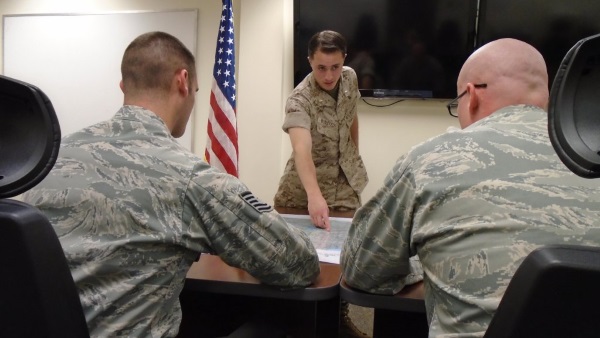
They are responsible for gathering, processing, and distributing sensitive information.
There are intelligence billets for both enlisted Marines and officers, which span a variety of different tasks.
The Marine Intelligence Community is headquartered in Damneck, Virginia, but has regional training centers at Camp Lejeune, Camp Pendleton, and Twentynine Palms.
What Do Marine Intelligence Officers Do?
Created in the 1990s, this MOS seeks to improve tactical intelligence and opens up command opportunities to early-career Marines.
Related Article – Marine Corps MOS List and ASVAB Scores: Details Of All 125 Jobs
There are currently five officer career fields for the intelligence occupational field, including Air-Ground Task Force Intelligence Officer, Ground Intelligence Officer, Intelligence Warrant Officer, Signals Intelligence Officer, and Air Intelligence Officer.
In almost all cases, Marine intelligence officers are responsible for analyzing gathered intelligence and making recommendations to the command based on their analysis.
They may work in counterintelligence or reconnaissance or even overseeing the highly technical work of signals intelligence/ground electronic warfare.
How Do You Become a Marine Intelligence Officer?
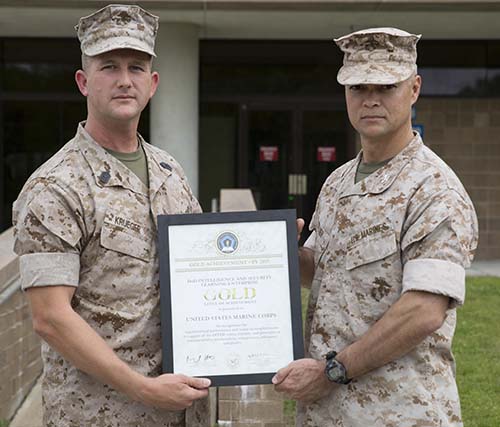
Depending on the intelligence career field that you choose, you will have to take specific training courses within Ground, Human Source, Signals, or Air Intelligence, all of which are located either at Quantico, Virginia, or Dam Neck, Virginia.
After officers receive the rank of LtCol, all the disciplines merge together, and officers are required to take a Marine Air Ground Task Force (MAGTF) Intelligence Officer Course (MIOC) in order to be designated as a MAGTF Intelligence Officer.
Related Article – Marine Corps Grooming Standards: Hair, Beard, And Nail Regulations
2. Explosive Ordnance Disposal (EOD) Technician
If you are a pretty chill person and can handle stress easily, you might be a good candidate for the Explosive Ordnance Disposal (EOD) Technician MOS.
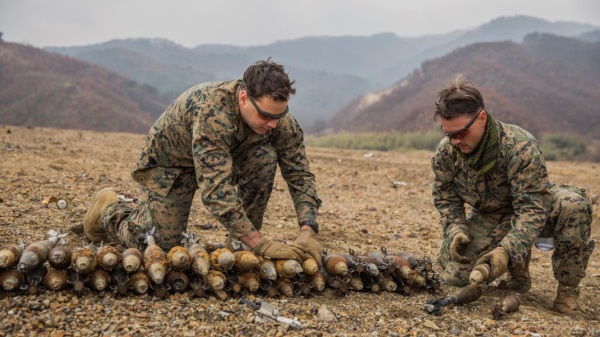
If there is a chemical, nuclear, or other hazard either on domestic soil or on a foreign battlefield, it’s the responsibility of the EOD to remove it.
The job is high-stakes as it could save the lives of countless Marines, but one wrong move could cause the EOD technician to lose a limb or maybe even his or her life.
The movie The Hurt Locker is Hollywood’s rendition of what an EOD Marine does.
What Do EOD Technicians Do?
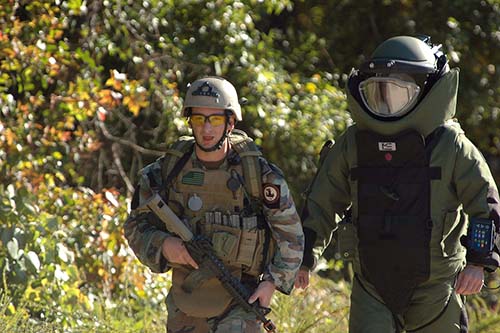
If it goes “boom,” EOD technicians take care of it.
In other words, EOD technicians are responsible for locating, accessing, neutralizing, and rendering safe ordnance, improvised explosive devices (IEDs), and other explosives.
Often deployed to combat, EOD technicians also take care of domestic hazards.
How Do You Become an EOD Technician?
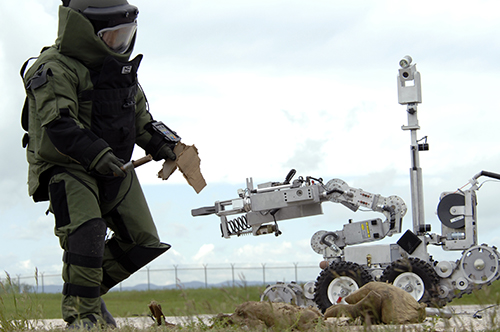
You can’t become an EOD technician straight out of high school. Instead, you can only volunteer for duty once you reach the rank of Corporal (E-4), and only the best of the best will be chosen.
Marines interested in the EOD MOS have to submit themselves to a screening, normally by a senior EOD technician.
In other words, it’s a job interview to figure out what Marines are most qualified.
In addition to a successful job interview, a prospective EOD Marine may not possess dual citizenship, must possess or qualify for a Top Secret security clearance, and must have a general technical score of 110 or higher on the ASVAB.
If a Marine scored lower than 110 on the ASVAB when first enlisting, he or she has the opportunity to retake the exam.
Additionally, prospective EOD Marines must have the highest physical fitness test scores, may not have claustrophobia, must have normal color vision, meet the height and weight standards, and cannot have any history of drug use.
Once an applicant is considered qualified to be an EOD technician, he or she is transferred to an EOD unit and soon thereafter must undergo formal training which takes place at the Naval School for Explosive Ordnance Disposal at Eglin Air Force Base, Florida and must be re-screened annually for continuing education.
It should be noted that every branch of the US military has an EOD job, check out some of our related articles below:
3. Marine Force Recon
Note: Read our full career profile of Marine Recon here.
Recon Marines must go through several months of difficult training in order to be allowed to wear the Marine gold jump wings and Marine SCUBA pin on their uniforms.
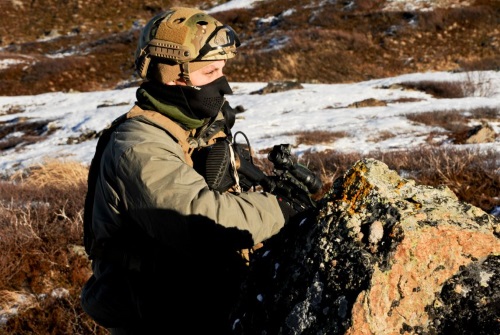
But the training is worth it to be a reconnaissance man, responsible for providing amphibious, ground reconnaissance, long-range, raid, and small unit skills.
What Does Marine Force Recon Do?
Recon Marines hold a variety of skills.
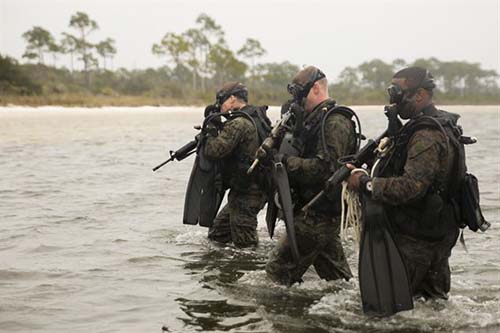
They have expert scouting and patrolling skills, including swimming, small boat operations, close combat skills, demolitions, surface, and sub-surface insertion and extraction techniques, and assault climbing.
Recon Marines must also specialize in communications, photography, and threat weapons and equipment recognition.
If a Recon Marine is assigned to an assault team, he or she must possess advanced skills in assault weaponry, close-quarter battle skills, and raid techniques.
Other Recon Marines may be free-fall parachutists, combatant divers, and dive supervisors.
How Do You Become a Part of Marine Force Recon?
You’ll need an ASVAB score of 105 or higher on the General Technical segment as well as a first-class swimmer qualification and a first-class score on the physical fitness test.
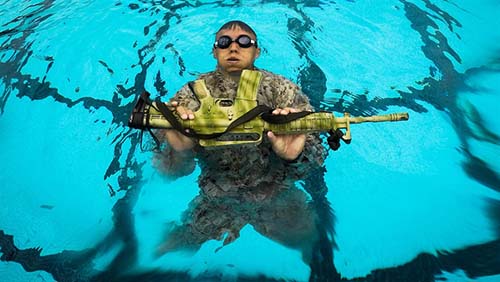
You must also be eligible for a secret security clearance in order to qualify.
While you can request to go straight into a Recon course, you must first graduate from Boot Camp and Infantry Training Battalion.
After that, you’ll be able to attend the Basic Recon Primer Course before moving to the Basic Recon Course after successful completion of the Primer Course.
Bonus Job – Best Job In The Coast Guard
When I originally wrote this article, I intentionally left out the Coast Guard for one main reason: there simply aren’t a lot of jobs.
With that said, the Coast Guard is a branch of the military, and it only makes sense to include it.
Aviation Survival Technician
Note: Click Here to read our full job description for Coast Guard Aviation Survival Technicians.
Without a doubt, one of the most popular jobs in the Coast Guard is that of Aviation Survival Technician.
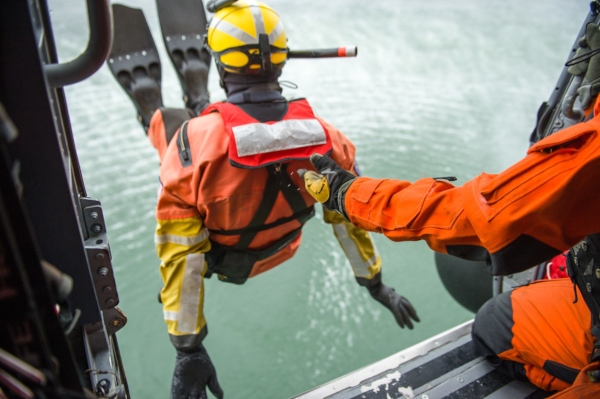
Aviation Survival Technician is essentially a fancy word for rescue swimmer.
If you’re a great swimmer and want to take on a job that is one of the most important jobs in the military, then becoming an AST might be right for you.
With that said, it is one of the hardest jobs in the Coast Guard to qualify for, so tread lightly!
What Do Aviation Survival Technicians Do?
In short, ASTs save lives. They are the men and women that are responsible for rescuing downed airmen, as well as others in need of rescue.
While most people think ASTs simply hop out of helicopters into treacherous waters and conduct rescues, they have many other responsibilities that are less glamorous.
They include things like:
- Maintaining survival equipment
- Storing and handling of aviation ordnance and pyrotechnic devices
- Facilitate survival training
- Perform ground handling and servicing of aircraft
- Conduct routine aircraft inspections
- And handle aviation administrative duties
While these duties are important, rescuing people in need is their #1 priority.
How Do You Become An Aviation Survival Technician?
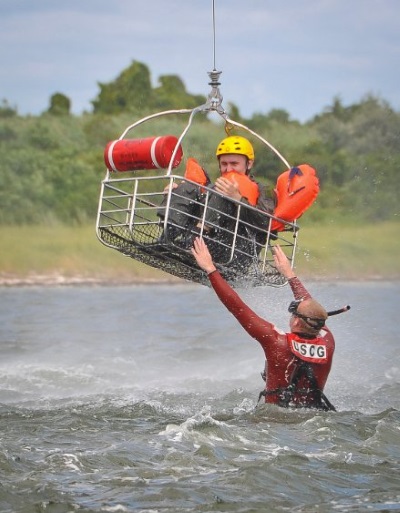
Becoming an AST is not for the faint of heart.
It’s by far one of the most difficult jobs in the military, not only to qualify for but also to pass their rigorous testing requirements.
In addition to the basic requirements of simply getting into the Coast Guard, you also need to meet the following qualifications:
- Be in superior physical share with no chronic orthopedic problems
- Have a high level of mental acuity and military bearing
- A high degree of confidence in, around, and below water (goes without saying!)
- An aptitude for mechanics, with a focus on school courses like algebra, geometry, and machinery being helpful
- Be able to pass a physical
- Qualify for a “secret” security clearance
In addition to the above requirements, the Coast Guard has minimum physical fitness test requirements that you need to meet.
They include:
- Pull-ups: 5
- Chin-ups: 5
- Push-ups: 50
- Sit-ups: 60
- 25 Yard Underwater swim: Completed 4 times
- Buddy Tow: 200 yards
- 500 Yard Swim: Under 12 minutes
Remember, these are the minimum requirements you need just to get into Rescue Swimmer A School.
If you actually want to make it as an AST, expect to perform way better.
Bonus Job – Best Job in the National Guard
Chemical, Biological, Radiological, and Nuclear (CBRN) Specialist
If you’re good at planning and organizing and are able to work efficiently and calmly even under high-stress situations, the CBRN specialist position in the National Guard might be the right fit for you.
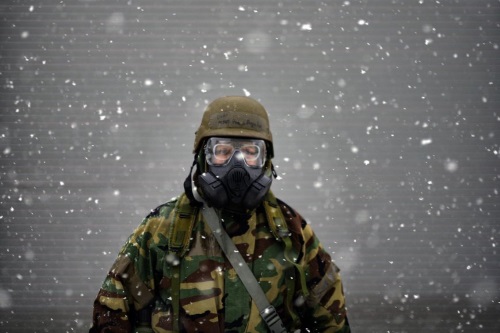
CBRN specialists are the first line of defense against weapons of mass destruction, as they are trained to handle defense measures, detection and decontamination equipment, and response operations.
What Do CBRN Specialists Do?
In addition to maintaining Chemical, Biological, Radiological, and Nuclear (CBRN) equipment, CBRN specialists conduct CBRN reconnaissance and surveillance and camouflage recon and surveillance equipment.
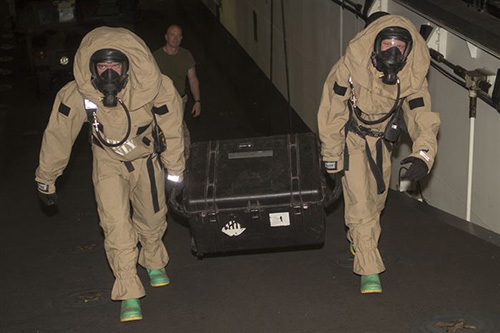
Finally, CBRN specialists operate decontamination equipment if there is a disaster.
How Do You Become a CBRN Specialist?
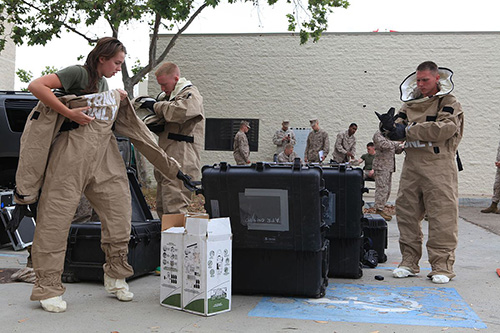
You’ll need an ASVAB score of 91 or higher in the skilled technical section, you’ll need to attend Basic Training, and then you’ll have 10 weeks of Advanced Individual Training, which will be divided between time in the field and in the classroom.
Related Article – National Guard Military (MOS 31b): Career Details
During the advanced training, you’ll prepare for CBRN defense actions and procedures, learn how to use CBRN protective equipment, including being exposed to toxic agents while wearing it, and how to operate CBRN decontamination, defense, detection, and monitoring equipment.
- Ikon Pass Military Discount: Learn How To Save Big - January 31, 2025
- RTIC Military Discount: Find Out How To Save Big on Gear - January 30, 2025
- Traeger Military Discount: Learn How To Save Big on Smokers - January 28, 2025





Why isn’t the best jobs of the Coast Guard included in your essay?
The only reason we left it out is because they have a very limited number of jobs (24 to be exact), and many of them are extremely similar to the Navy. With that said, I think I’ll be adding a section on the best Coast Guard jobs soon.
I saw you said no Coast Guard because they are limited and are similar to Navy jobs. While the first is true the latter point is false. We definitely have more responsibilities, tasks, and collaterals then those with the same rate in the Navy.